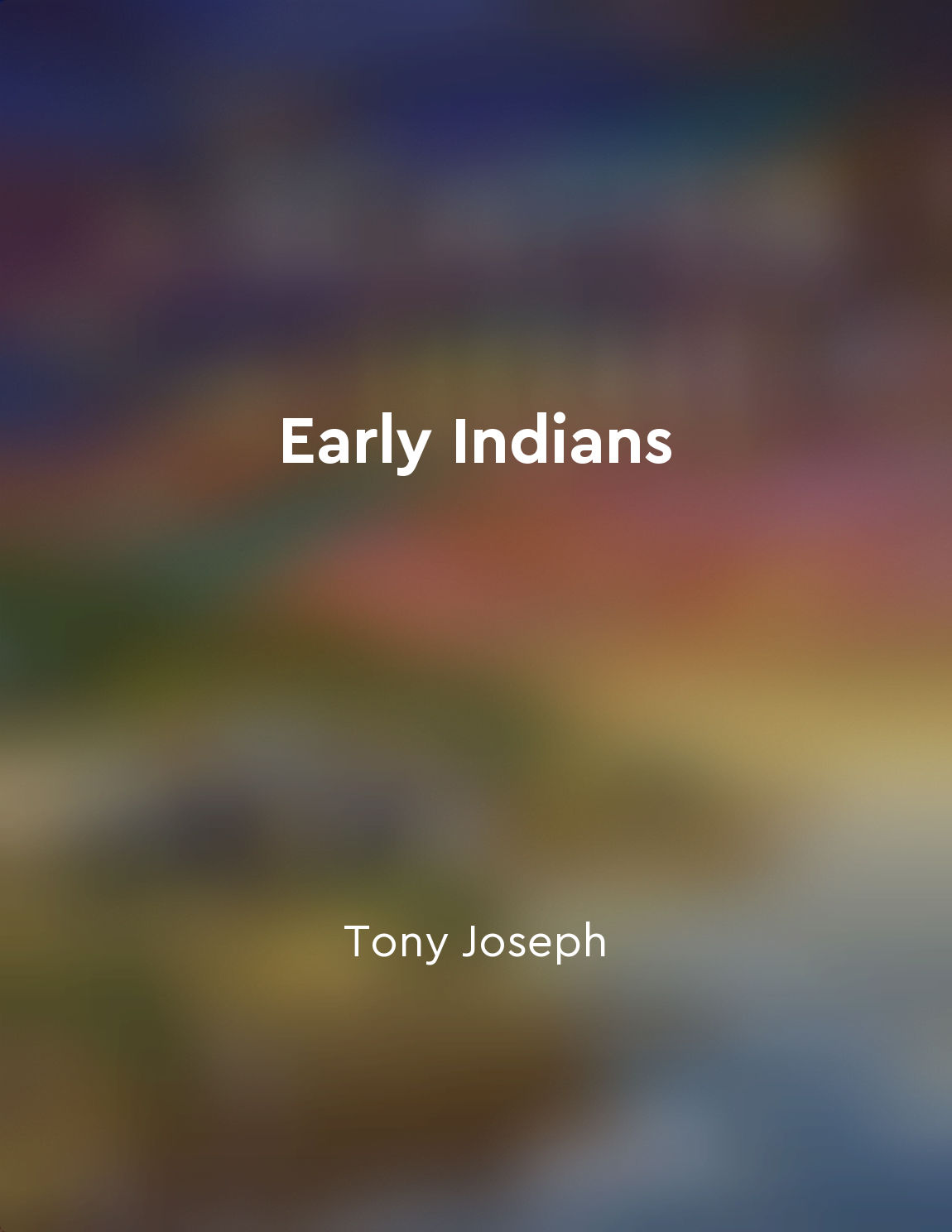Evidence of intermingling of diverse populations from "summary" of Early Indians by Tony Joseph
The genetic evidence, as discussed in the book, clearly indicates a significant amount of intermingling between different populations over the millennia. The DNA of ancient individuals from the subcontinent shows a mixture of ancestry from various sources, such as the early hunter-gatherers, the first farmers from West Asia, and the Steppe pastoralists. This intermingling likely occurred through a series of migrations, interactions, and cultural exchanges that took place in the past. The genetic data reveals that the Harappans, the people of the Indus Valley Civilization, were themselves a mix of different groups. They were descended from a population related to ancient Iranian farmers, as well as an ancient South Asian group. This suggests that the Harappans were not a homogeneous population, but rather a diverse community with roots in different parts of the subcontinent and beyond. Furthermore, the genetic evidence also shows that the Ancestral North Indians (ANI) and Ancestral South Indians (ASI) mixed together around 4,200 years ago. This mixing of populations led to the formation of the diverse genetic landscape that we see in India today. The ANI-ASI admixture has left a lasting impact on the genetic makeup of modern Indians, with most individuals in the subcontinent carrying a blend of ANI and ASI ancestry.- The genetic data provides concrete proof of the intermingling of diverse populations in ancient India. It highlights the complex and dynamic nature of human migration and interaction, shaping the genetic diversity of the subcontinent. This evidence challenges simplistic notions of purity and homogeneity, emphasizing the rich tapestry of human history and heritage that has unfolded in the Indian subcontinent over thousands of years.
Similar Posts

Language is a unique feature of human culture
Language is a distinctive trait of human beings, setting us apart from other animals. While other species communicate using var...
Nehru's policies shaped India's early years as a republic
Jawaharlal Nehru, the first Prime Minister of independent India, played a pivotal role in shaping the country's early years as ...

Bioarchaeology focuses on the study of human remains in archaeological contexts
Bioarchaeology is a fascinating field that involves the study of human remains in archaeological contexts. When archaeologists ...
The Maurya dynasty unified India under Chandragupta
The Maurya dynasty, one of the most powerful empires in ancient India, played a crucial role in the unification of the Indian s...
Developmental biology uncovers similarities in embryonic stages
In the course of its development from embryo to adult, an animal typically goes through a series of stages that bear a striking...
Ancient Indian History is crucial for competitive exams
Ancient Indian History holds significant importance for various competitive exams. It provides a deep understanding of the root...


